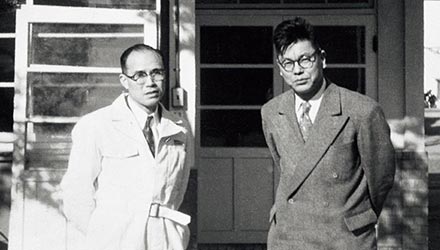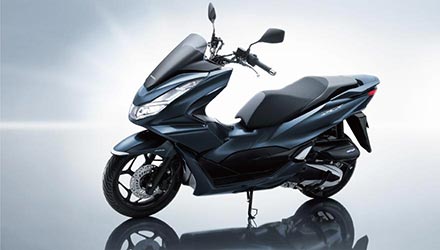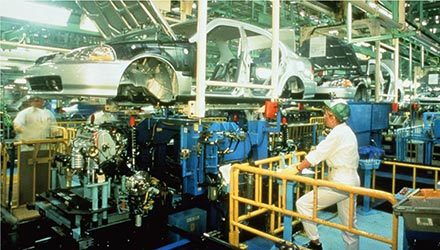Success of Tillers Establishes Foundation for Power Products
Business in European Countries
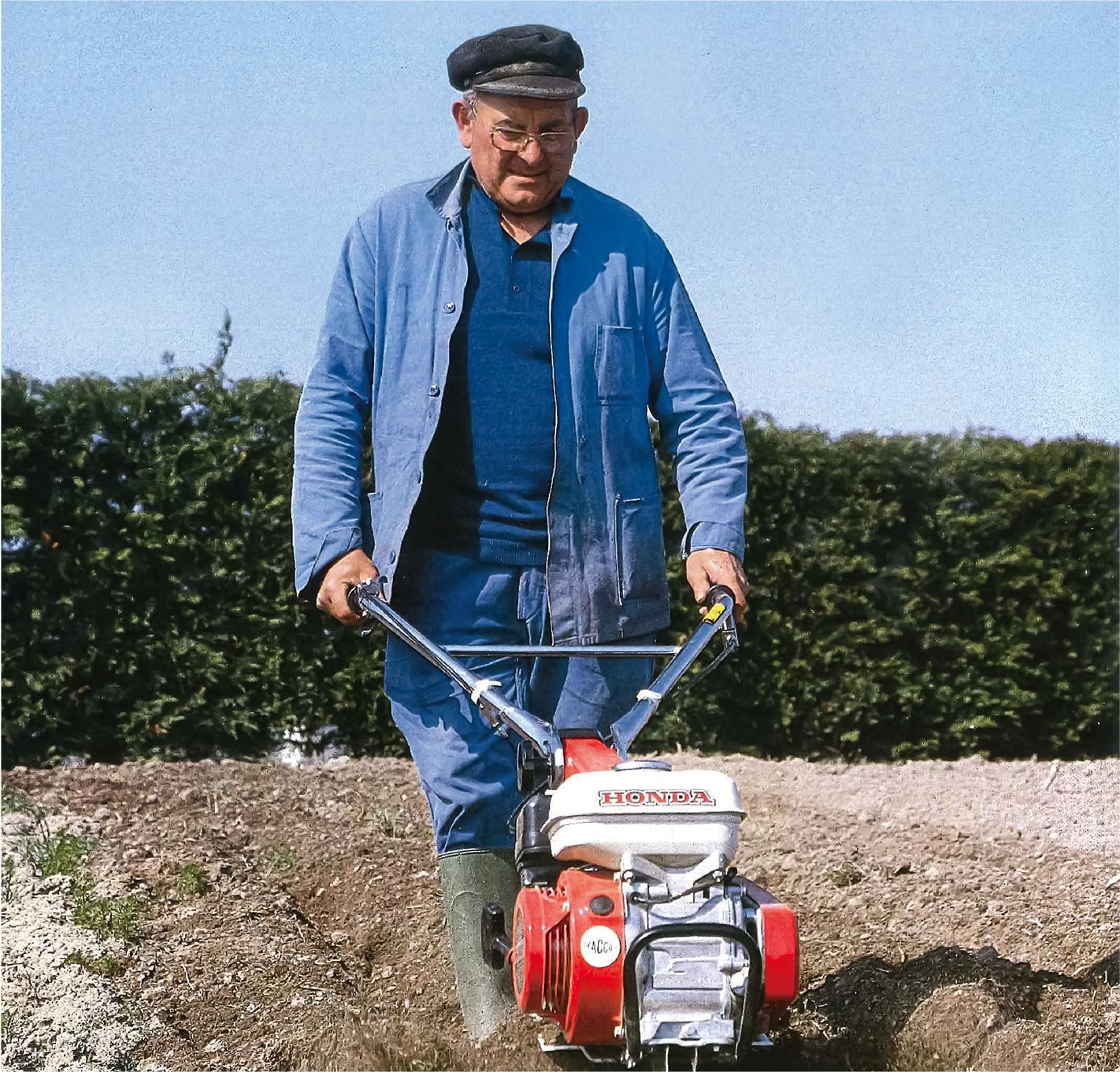
The fields and gardens of France are the birthplace of Honda power products business in Europe.
 The F25 was a big hit in European countries thanks to its compact size and easy handling.
The F25 was a big hit in European countries thanks to its compact size and easy handling.
Europe is not only the home of motorcycles, but of power products, including tillers. In March 1963, Honda exhibited the F190 and F60 tillers at the Paris International Agricultural Show. Those tillers were highly acclaimed for their maneuverability in small areas, their shiny and durable chrome-plated rotating handle, headlights for night use, and excellent design.
In addition, Honda original machete-shaped tine design, was ideal for plowing vineyards with low-hanging branches often found in southern France and farmland on hard bedrock. Honda tillers quickly became a hot topic, and the company was inundated with applications from distributors. 1964 saw the establishment of Honda France (FH). After conducting in-depth market research in the region, FH introduced the F25/F28 tillers in 1969, which could be used by suburban farm owners. The F25/F28 models, small enough to be loaded into a car, became a huge hit due to their compact size and ease of handling, and spread to Belgium, former West Germany, the United Kingdom, the Netherlands, Spain, Finland, and other European countries.
Mr. Takeo Fujisawa, then vice president of Honda, described the contribution of the general-purpose engine in Europe:
“I would like to say that the foothold to start automobiles in Europe was not motorcycles, but agricultural machinery. The fact that Japanese manufacturers gained ground in the field of agricultural machinery was a powerful factor in creating the image of Japan in France. [...] All Honda products are unique, including motorcycles, agricultural machinery, and generators. Our products have value precisely because they are not imitations. I can say that Honda exists today because it is highly valued by foreign countries because we are not a copycat.”
This success of tiller models became the foundation of Honda business in Europe.
Cultivating New Territory by Focusing on European
and U.S. Lawnmower Markets
In the mid-1970s, the global market for power products was approximately 20 million units per year, of which about 8.5 million units were lawnmowers, representing a market with great potential. In 1975, after completing research on the ME engine*5 following the H engine, the development team was ordered to develop a lawnmower. At that time, few families in Japan owned houses with lawns. Development team members were puzzled as to why Honda, a company in a country without lawns, would foray into a market saturated with lawnmower makers from countries in which lawns were commonplace, but nonetheless they flew to the United Kingdom, former West Germany, France, Switzerland, the United States, and other lawnmower markets.
The associates who traveled around Europe and the U.S. were amazed at the power of the Honda brand. Agricultural equipment dealers everywhere welcomed the Honda associates with open arms, enabling the team to conduct useful research. The team vowed that they would not tarnish the Honda brand, built through motorcycles and automobiles, but create lawnmowers that would be used with satisfaction for 10 or 20 years.
To differentiate its products from the competition, Honda focused on quietness, safety, and operability, and successfully developed a vertical engine that was quiet, with unparalleled ease of starting, and the world's first BBC (blade brake clutch: blade rotation automatically stops within 3 seconds of releasing the handle) mechanism. In 1978, Honda launched its first walk-behind lawnmower, the HR-21, which enjoyed brisk sales in Europe, the U.S., and other markets outside Japan. By 1985, Honda lawnmower business had grown to a scale where it boasts annual sales volume of approximately 330,000 units.
- General-purpose engine designed to power various machines

First Honda walk-behind lawnmower, the HR-21, was highly acclaimed in the European and U.S. lawnmower markets.

Mowers on display at a dealership location in the suburbs of Paris (1987).
Making People’s Daily Lives More Enjoyable:
Miimo Represents a Robotic Lawnmower Unique to Honda
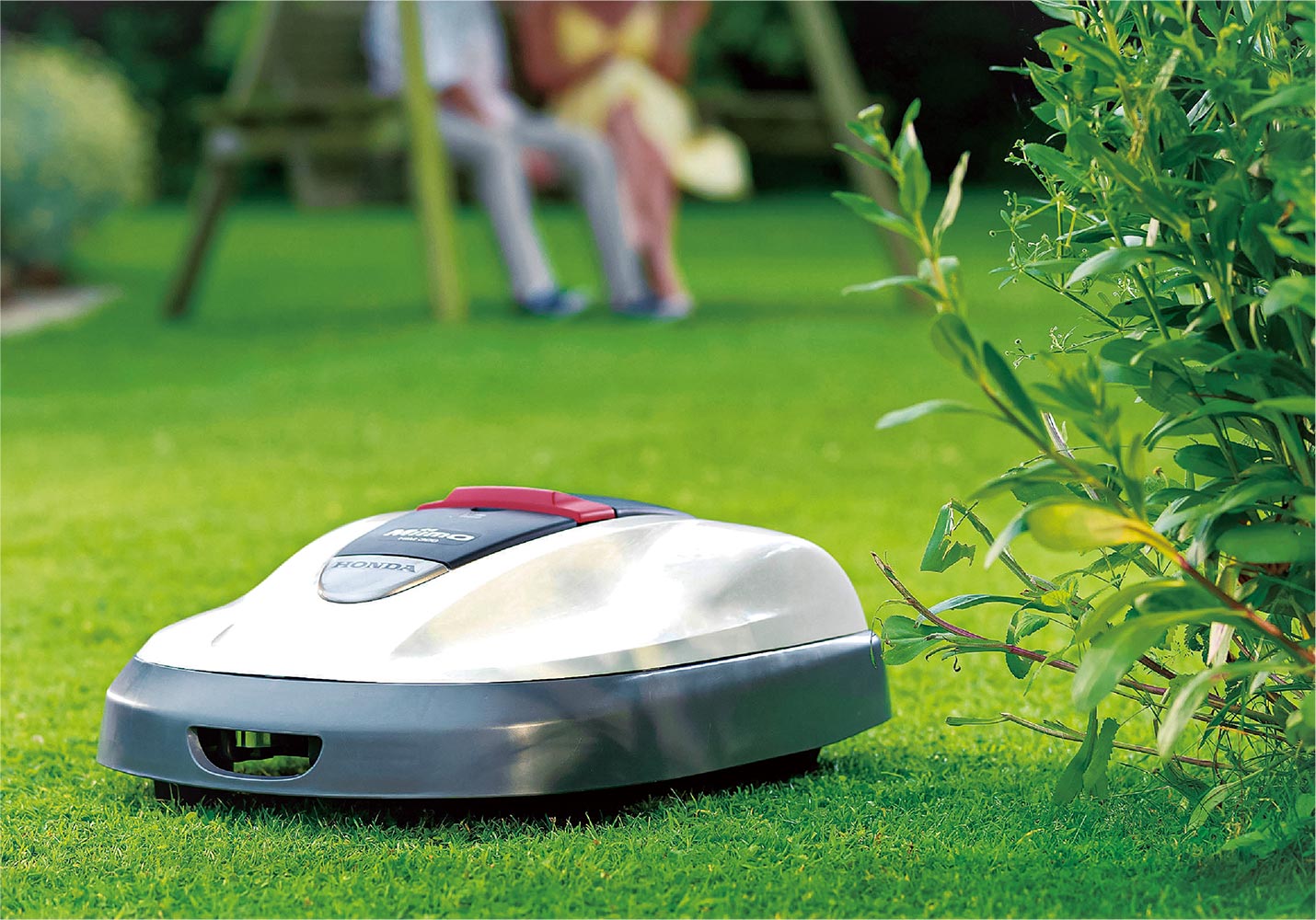
Miimo was designed in the pursuit of a robotic lawnmower unique only to Honda.
In Europe, a lifestyle of tending to yards with a lawnmower on weekends is well established. But since the 2000s, there has been a growing need among the younger generation, which has grown up surrounded by convenient IT tools, to automate the tedium of mowing lawns and use the time in other ways.
Automated lawnmowers (robotic mowers) began to expand their popularity in the European market around 2004. By 2009, major lawnmower manufacturers began to launch their robotic mower products, leading to concerns that Honda would lose its popularity, and Honda started the development of robotic mowers.
In 2013, Honda launched Miimo*6, a robotic lawnmower that embodies a unique Honda style. During the pre-development market research phase, the development team members visited multiple households in Europe that were already using a robotic lawnmower. Through these visits, the team noticed that there was a new added value robotic lawnmowers offered to customers. One family loved their lawnmower so much, they gave it a name, treating it not as a machine, but more like a family member or pet.
Jun Hosaka, chief engineer at the Power Products R&D Center at the time, said: “After returning to Japan, we started thinking about what the Honda robotic lawnmower should offer. We had a strong impression of how the family treated it like a pet. So, we decided to design Miimo with a sense of comfort and happiness in mind, to fit into a friendly and elegant garden life.”
Miimo was produced at Honda France Manufacturing (HFM) in Orléans, France, which became the first Honda factory to produce household electrical products equipped with automatic control technology. HFM successfully overcame the major challenge of procuring electrical and electronic components from different suppliers and assembling them on the production line.
The origin of Honda power products can be traced back to its business philosophy of providing products that help people in their daily lives.
Hosaka said: “Listening to our customers, some told us that although Miimo has a lot of functions it is simply cute, and one person told us that he bought a Miimo for his aging farther but his mother also loved it. These customer interviews became an opportunity for us to reaffirm that by designing our products not only thinking about the product itself, but also imagining the situations in which the product would be used and the atmosphere it can add to people’s daily lives, we can make our customers as well as their families happy.”
Based on the philosophy of “providing products that help people in their work and daily lives,” Honda has been developing and producing products that create happiness and emotional attachment, and that led to the creation of a robotic lawnmower unique only to Honda.
- Miimo (My Intelligent Mower)

Honda France Industrie (HFI) began manufacturing power products in 1986 and renamed HFM in 2008.
Leveraging Alliance with British Leyland as Foothold
to Enter the Automobile Market
 Through the technical collaboration with BL in the U.K., Honda gained a foothold to establish automobiles sales and production operations in Europe.
Through the technical collaboration with BL in the U.K., Honda gained a foothold to establish automobiles sales and production operations in Europe.
The first oil crisis in 1973 followed by a second in 1978 triggered the Big Three, led by GM, to shift their focus from large to small cars. This sparked a reorganization of the automobile industry, and a global automotive industry war. It was also a great opportunity for Japanese automakers, which specialized in small, fuel-efficient cars.
In December 1979, Honda entered into a technical collaboration with British Leyland (BL), a British company famous for its Austin and Rover models. At the time, BL was in financial difficulties and had been nationalized. The British ambassador to Japan, acting on behalf of Prime Minister Thatcher, who had pledged to privatize Rover, initiated the discussion toward the collaboration. While Japanese automakers were declining the offer one after another, Honda saw this as an opportunity to take the first step toward automobile production in Europe, where restrictions on Japanese cars were intensifying. Europe is home to many automakers and a well-developed market for small cars. By teaming up with BL, Honda saw an opportunity to gain a foothold in Europe and establish a local sales and production operation in the face of increasingly stringent regulations.
Two years later, in 1981, BL began licensed production of the Honda Ballade as the Triumph Acclaim, which was sold successfully in many European countries. Gaining momentum, BL approached Honda to jointly develop an executive car, which Honda saw as an opportunity to learn technologies for luxury vehicles. This mutual interest resulted in a formal agreement in 1983. The project code name was “XX.” This was a groundbreaking experiment even by global standards, in which Honda and BL collaborated on everything from development to production. In the same year, Honda also agreed with BL to license production of the Honda Ballade as the Rover 200, which would be the successor to the Triumph Acclaim.
In their first co-development, the teams from both companies experienced a number of conflicts, however, in time, the Project “XX” resulted in the Honda (Acura, in North America) Legend (1985) and the Rover 800 (1986), both equipped with a V6 engine.

Legend
Learning European Car Manufacturing
to Cultivate a Market for Honda Models
In June 1985, as Project “XX” was reaching its peak, a memorandum of understanding for a new partnership for the next project, Project “YY”, was signed. Then, in December 1986, a joint development agreement was signed and Project “YY” was officially set in motion. Based on the experience with the Legend, in order to create a more efficient development system, it was decided that Honda would take the lead in overall development while utilizing the strengths of Rover for the design. The development team members from Austin Rover Group were stationed at the Wako R&D Center (HGW), Tochigi R&D Center (HGT), in Japan and Honda R&D Europe (HRE) in Germany for an extended period of time to work on this development.
As a mass-market car, the Concerto was required to meet the European market's basic performance requirements for “go, stop, turn,” while cost and productivity were also important factors. As with the Legend, maintaining local content of 80% or above was a challenge.
Procurement was carried out while obtaining information on European parts manufacturers from Austin Rover Group; however, the difficulty of getting parts made to meet Honda specifications and quality standards was extraordinary. Finally, in May 1989, four years after development began, the Rover 200/400 and the U.K-built Honda Concerto were announced and produced at Rover Group's Longbridge plant. The Rover 214, a Rover 200 series model added in 1990, won What Car? Magazine's 1990 Car of the Year, and models jointly developed by Honda and Rover continued to sell well, and multiple variations were introduced over the next several years.
The continued success of jointly developed models, starting with the Ballade/Triumph Acclaim, followed by the Legend/Rover 800, Ballade/Rover 200, and Concerto/Rover 200 and 400, enabled Honda to take a solid first step into the European automobile market.
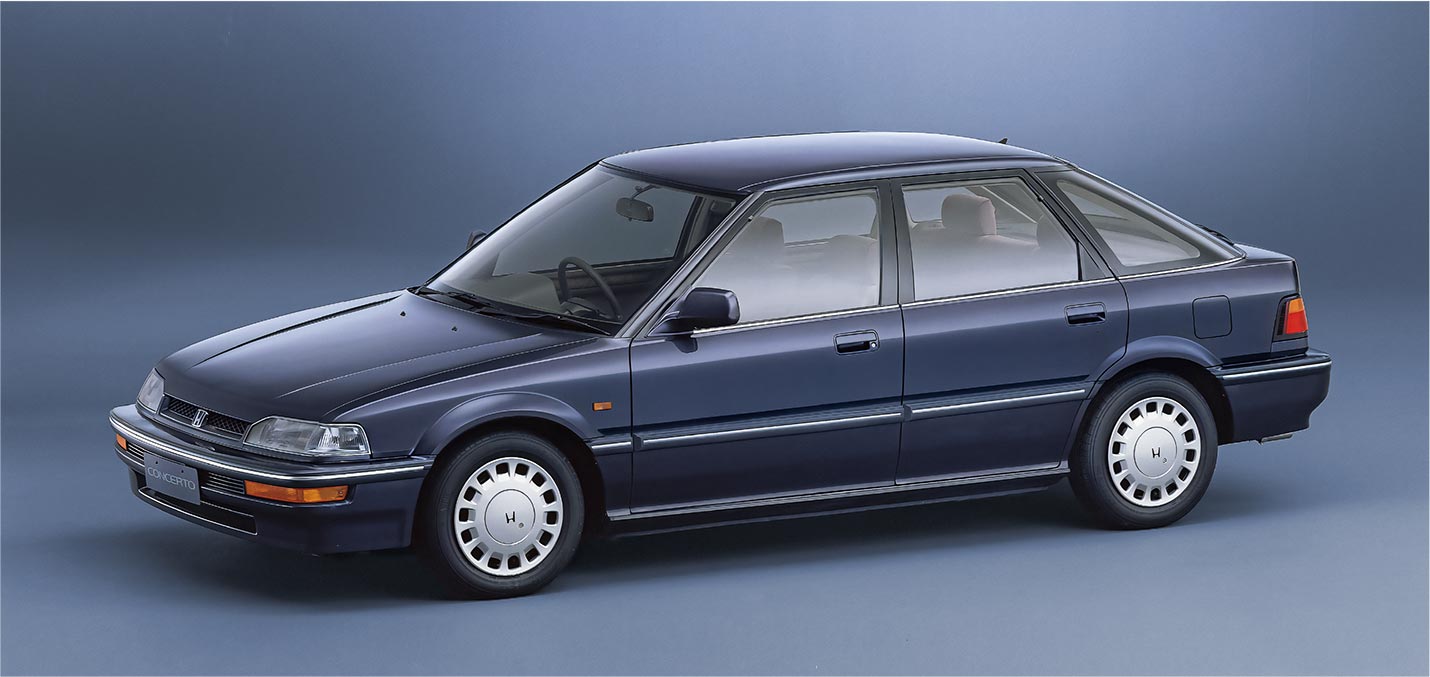
The Concerto (Japanese version) became the second model jointly developed with the Rover Group.
The Significance of the Rover Group Alliance for Honda
The alliance between Honda and Rover Group in the European market accelerated: in 1990, Honda entered into a capital alliance with Rover Group. The previous year, in 1989, Honda of the UK Manufacturing (HUM) in Swindon, Wiltshire, U.K., began building auto engines. The same year, an agreement was reached to build an automobile plant at HUM, and the joint development of the European Accord/Rover 600 began as the first complete vehicles to be produced at HUM. In October 1992, the Accord rolled off the production line.
Although local production in Europe by Japanese automakers was increasing, Honda was feeling confident about the process it was making through the alliance with Rover Group. However, in early 1994, when the development of the Civic 5-door/Rover 400 was nearing completion, Rover Group was acquired by BMW, and the capital alliance with Honda suddenly came to an end.
The Civic 5-door, launched in October 1994, and the Rover 400, launched in March 1995, were produced at HUM and Rover Group, respectively. The 15-year partnership with Rover Group was significant to Honda in three ways.
Shojiro Miyake, then HME/HUM President, said: “First, Honda had only a small market in Europe due to import restrictions and was able to expand its sales by having Rover produce the Concerto. Second, Honda started an engine production plant at HUM and supplied engines produced there to Rover, establishing a foothold for local automobile production. Third, the great efforts made by our predecessors in various partnerships over a period of twelve years have been appreciated by European society. This was very significant because it allowed Honda to join the European automobile industry.”
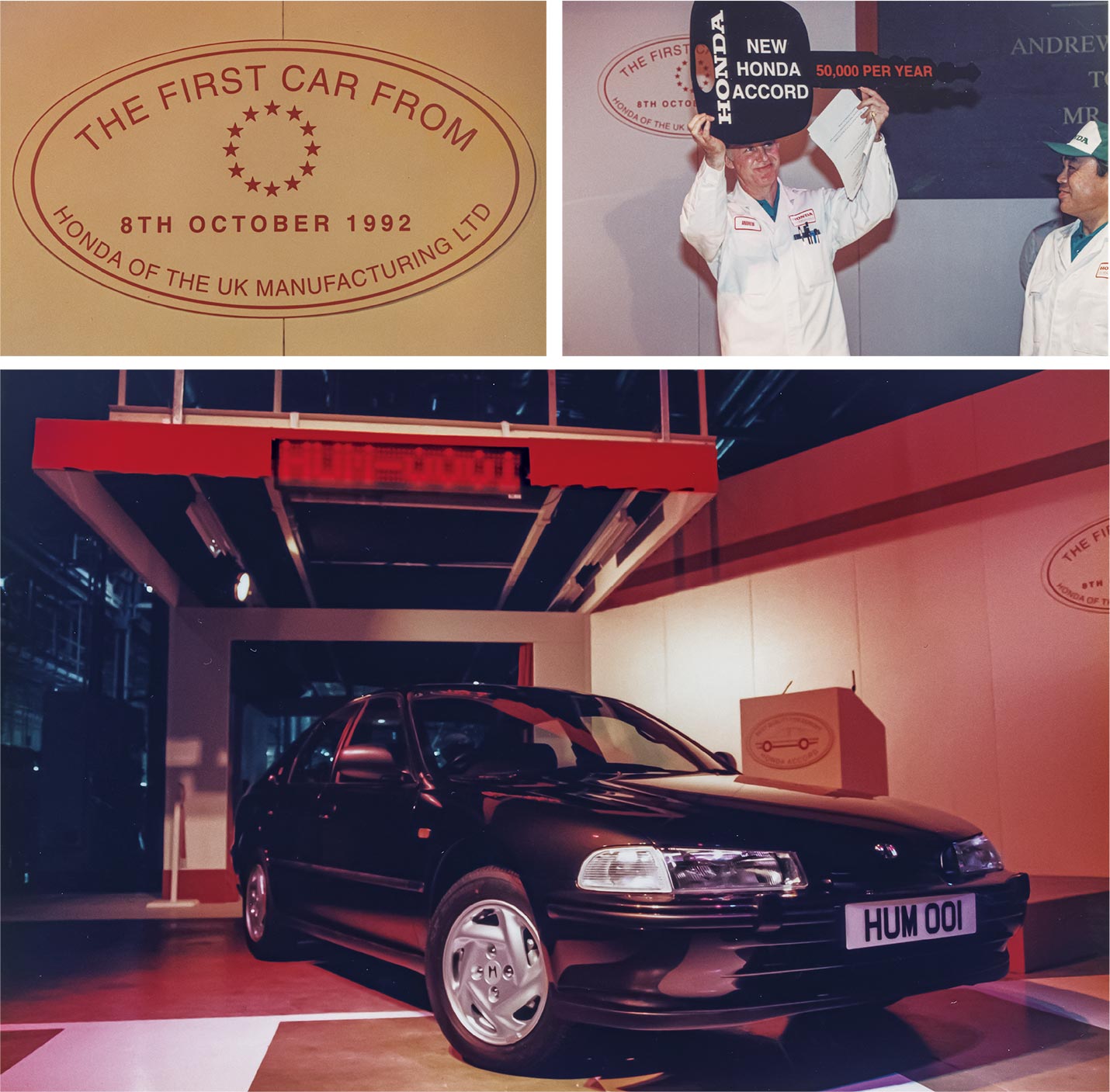
In 1992, first complete vehicle produced by HUM, the Accord, came off the line.
Building Our Own Cars:
HUM Automobile Factory Starts Production
HUM played a major role as the Honda automobile production base in Europe. Established in 1985, HUM started as a PDI (pre-delivery inspection) center for the Ballades manufactured by the Austin Rover Group. Since 1989, with the joint development of the Concerto/Rover 200/400, HUM assumed the role of an engine production plant. HUM had always dreamed of producing complete vehicles one day, but it was said that an automobile plant had to have an annual production volume of at least 200,000 units to be viable.
Even though Honda technology was highly regarded in Europe, strict import regulations was forcing Honda to limit its market. To address this issues, Honda decided to produce two models on consignment from Rover Group to make the plant profitable. Then, in 1992, HUM began production of the European Accord, establishing itself as a production plant for Honda brand models.
As a result, the Honda sales network was also strengthened, enabling Honda to sell products in France, Italy, Spain, Portugal, and other countries where strict import restrictions were being imposed. Honda was no longer an importer, but a manufacturer with roots in Europe.
The then HME/HUM President, Miyake said: “We established a production operation in Europe to provide high quality Honda cars that would please our customers. The basic Honda approach is to building products close to the customer. By producing our products as close as possible to our customers, we can create products with specifications and quality that match the needs of each market and please the customers who buy them. We decided to established local production operations within Europe in order to meet the demands of our customers in Europe.”
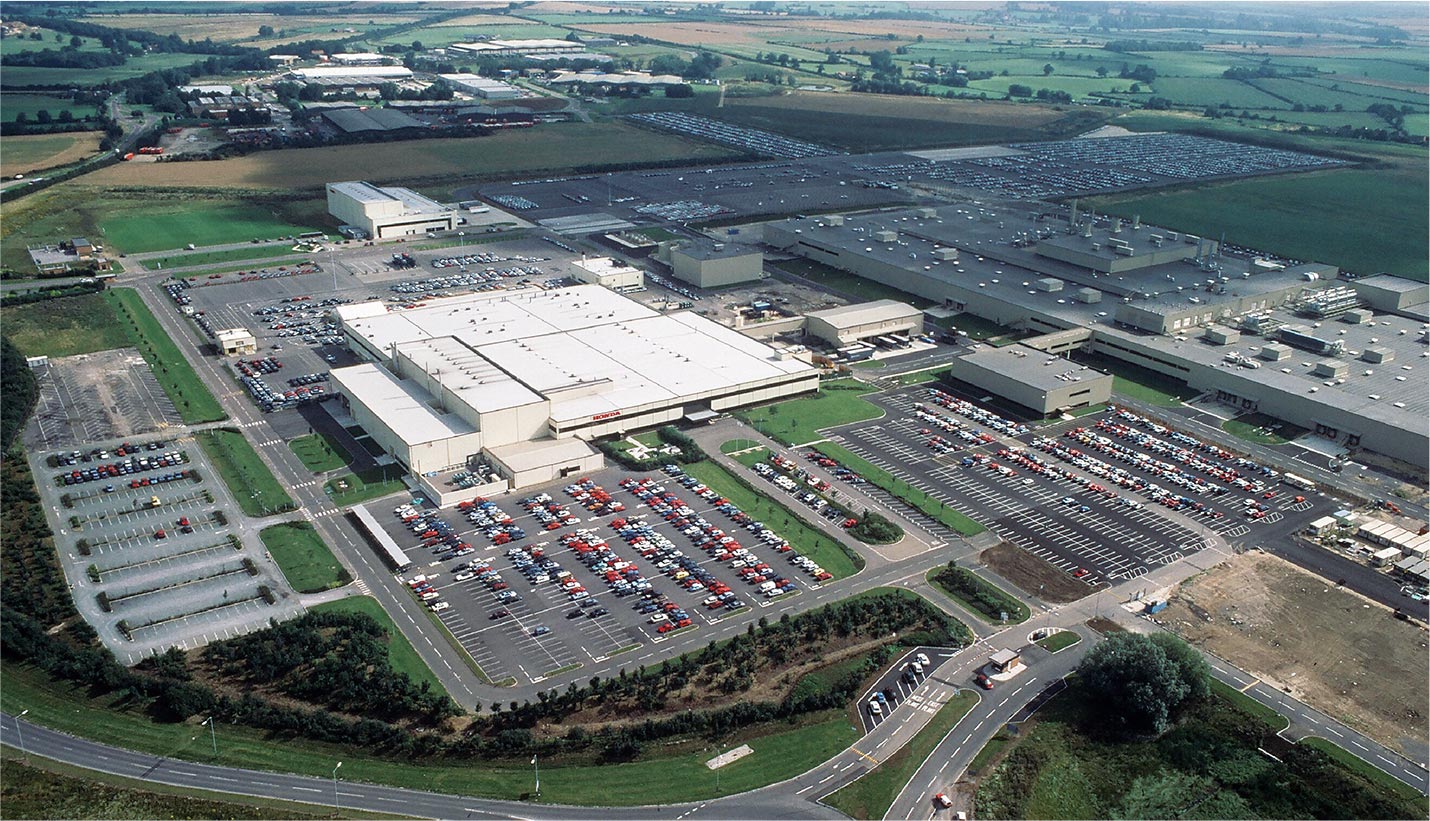
HUM began automobile production in 1992 and became the production base for Honda automobile business in Europe.
In 1989, HME was established as the Honda headquarters in Europe to oversee its business activities, and in June 1992, the Honda four-region global structure was established, with the world organized into four regions (Japan, Europe, Asia & Oceania, and North America) to promote autonomous business activities. HME/HUM became the center of Honda operations in Europe.
